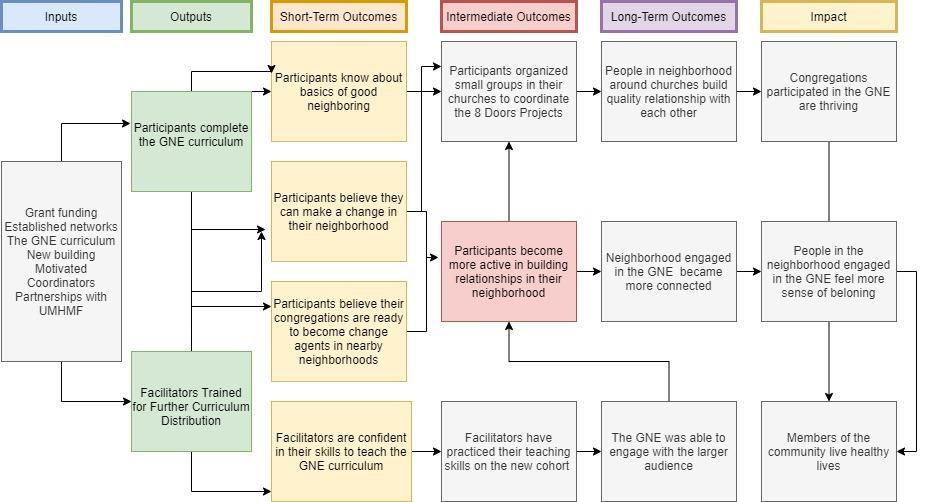
1 minute read
Executive Summary
Executive Summar y
• This report includes the cohorts of the Good Neighboring Experiment (GNE) program, which occurred between January 2021 and May 2022. • The results include the results of 28 GNE participants that completed both the pre- and postquestionnaires. • Findings indicate that there was approximately a 27% increase in knowledge among participants across the three cohorts. • Although modest, participants showed a 10% improvement in attitudes towards the possibility for positive changes in their neighborhoods and churches. • Participants showed a 19% improvement in their comfort with organizing small group work within their churches. However, there was quite a difference between groups. The Mark Cohort showed a 20% increase while the Exodus Cohort showed only an 8% increase. • On average, participants increased the frequency and intensity of their neighboring activities after participating in the GNE. • Despite facilitators reporting high levels of facilitation skills prior to participating in the GNE, on average, they reported about 20% growth in their ability to translate GNE to their churches. • Participants from Kansas reported larger gains from the GNE than those from out of state. However, there was one exception. Participants from out of state reported spending more time building relationships than those from Kansas.
Advertisement
Corresponding author: Dr. Dasha Shamrova, dasha.shamrova@wichita.edu Preferred citation: Shamrova, D., & Alberton, A. (2022). The Good Neighbor Experiment: Evaluation of the GNE Curriculum Outcomes. Report #2. Contributors: We are grateful for the Good Neighboring Experiment Team for assistance in collecting the data and communicating with the participants.



